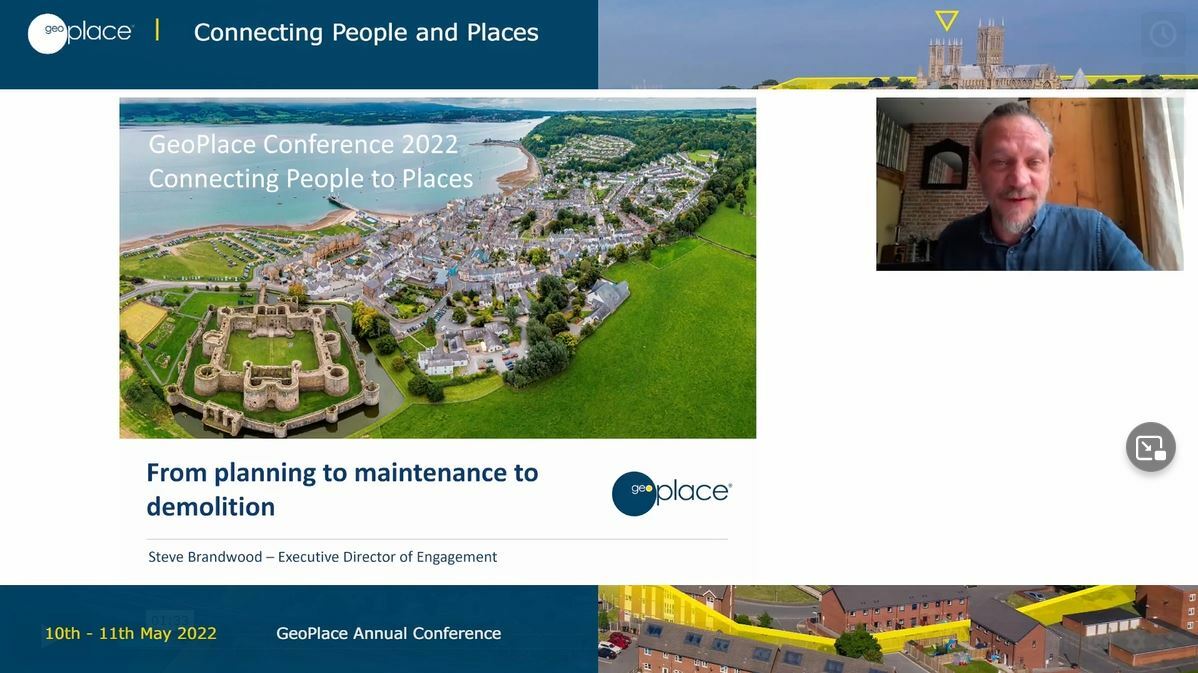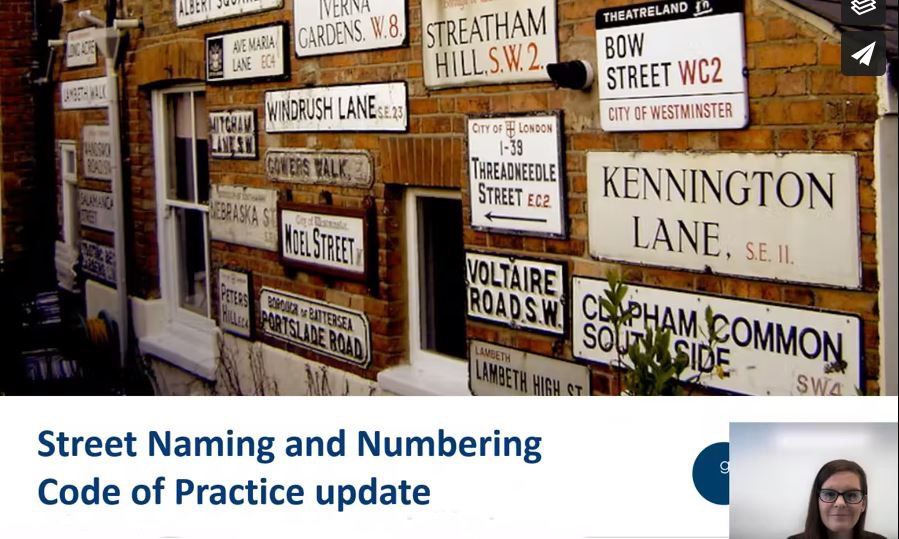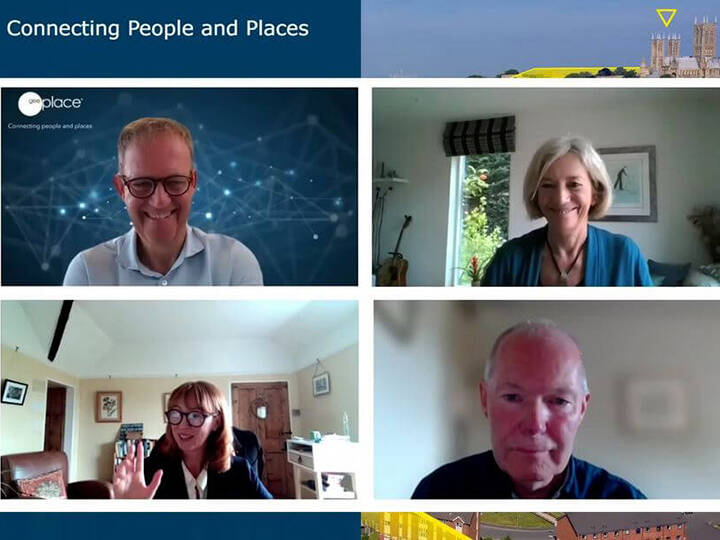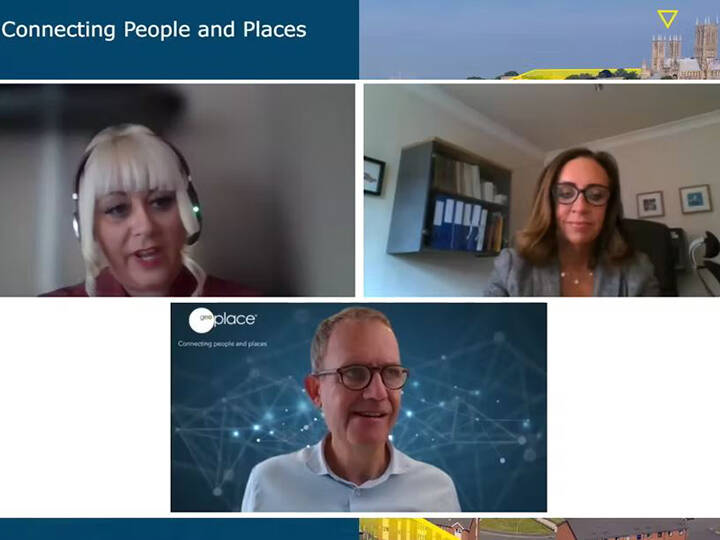This session at the 2022 GeoPlace annual conference looked at the life cycle of the UPRN, and the many different processes and organisations involved.
The speakers:
From planning to maintenance to demolition
- Steve Brandwood, Executive Director of Engagement, GeoPlace
Street Naming and Numbering – the start of the life cycle
- Zoe Britt, Head of Local Authority Engagement, GeoPlace
- Dave Heyes, Chair of the DCA SNN Working Group and Gazetteer Custodian at Wigan Council

Steve Brandwood, Executive Director of Engagement at GeoPlace, opened this session looking at the use of the UPRN in every stage of the infrastructure life cycle, from planning through to maintenance and to demolition and beyond. He started by looking at the operational level of data management.
As an overview, Steve noted that local authorities are the prime originators of change intelligence. Managing change in a consistent way drives efficiencies throughout the life cycle. It also helps the process of intelligence gathering itself, which results in better outcomes for communities.
GeoPlace’s activity streams over the last year have included significant amounts of work to progress its Public Sector Geospatial Agreement (PSGA) requirements – working with OS surveyors, authoritative third parties, the VOA and local authorities. Custodians’ responses to the evolving requirements have been outstanding, and the Improvement Schedule measures include construction site intelligence from OS surveyors; OS surveyor change intelligence; and comparison with third party data sources. Most of this work has been done through a combination of Candidate resolutions and Health Checks, with GeoPlace updating ‘NULL’ BLPU state Code where it can be inferred from authoritative third-party sources. GeoPlace is now looking at developing additional functionality for this type of resolution.
GeoPlace has been providing a daily feed of NAG data to OS for some time, which helps OS to plan its survey work more efficiently – not only for the organisation itself, but also for users. It has also been receiving change intelligence from OS, primarily delivered via the Candidates’ process This has been providing a range of information about construction sites, which is being fed back to Custodians (including life cycle intelligence such as logical status and state codes). The 99% target for improvement schedules has been met to date, and by the end of 2023 it is hoped this will be a 100% meet.
One of the key things GeoPlace has been looking at over the last year, is the BLPU state code and logical status within the data. There is still work to do on BLPU state codes but in a database of more than 35m records, there is now consistency against data in the PAF/VOA for least 28m records. Steve then provided an overview of the work that is continuing with the VOA, looking at ways to provide continuous improvements for ValueBill, and concluded with a summation of the discovery work that has been done with local authorities over the last 12 months.

Zoe Britt, Head of Local Authority Engagement at GeoPlace, presented a session looking at the latest developments on the Street Naming and Numbering code of practice, with a contribution by Dave Heyes, Chair of the DCA SNN Working Group and Gazetteer Custodian at Wigan Council.
Street Naming and Numbering is a process that sits at the very start of the property life cycle. Zoe explained that this new code of practice is being launched for consultation, aimed at providing more support for Street Naming and Numbering officers. Not a week goes by, without a query about Street Naming and Numbering – not only inside the location data community, but also in the media. Accurate Street Naming and Numbering allows society to access the widest range of services. Street Naming and Numbering is a complex area for local authorities.
The Street Naming and Numbering code of practice delivers many years of insights, which help all Street Naming and Numbering officers to be more consistent. It’s a manual, coupled with resources to help manage external agencies. It complements the Date Entry Convention documents. A 5-year action plan was published in 2018, and a series of themes were agreed on to form the code of practice.
The themes are:
- Governance
- Legislation
- Charging
- Consultation
- Street Naming and Numbering processes
- working with Royal Mail
- Street Naming and Numbering notifications.
The proposal for the new code of practice is the creation of a dynamic, interactive web pages – through which users can navigate to find out what they need to know on, for example, legal guidance for Street Naming and Numbering. This should make it much easier to navigate the evolving complexities of Street Naming and Numbering, which do change over time. The new structure will enable provision of extra resources, too, including diagrams to help illustrate key parts of the Street Naming and Numbering process.
The consultation for the new code of practice will run for six weeks, and updates about the consultation process will be provided to all stakeholders.
Dave Heyes, who has Chaired the DCA SNN Working Group and Gazetteer Custodian at Wigan Council for a significant number of years, concluded the session with a presentation on Street Naming and Numbering in general as the start of the property cycle. The new code of practice has been produced by the community, for the community. Dave built on Zoe’s reflections that the new structure for the Street Naming and Numbering code of practice should make life easier for Street Naming and Numbering officers. He went on to explore the theme of legislation in more detail.
There has been an independent review of the legal framework for Street Naming and Numbering, and a comprehensive explanation is included in the new code of practice. This includes notes to explain the important differences between power and duty, for Street Naming and Numbering. There will also be a section on authority governance – where legislation may not be overt for Street Naming and Numbering, but a decision is still required by the local authority, to discharge its obligations and duties. There is documentation available at the moment on the GeoPlace website.
The Department of Levelling Up Housing and Communities has a consultation in place regarding the renaming of streets. GeoPlace has a recommended response to this consultation, as this offers the opportunity to establish a uniformed approach that can lead to greater efficiencies. Street Naming and Numbering officers are encouraged to seek confirmation before adding responses to the consultation.
Dave continued, looking at the best practice that will be highlighted within the new code of practice for Street Naming and Numbering officers. This will include guidance on how to name streets; naming of private and adopted streets; the importance of street suffixes; processes and governance; street nameplates; renaming streets; property signage; and which properties are subject to Street Naming and Numbering, and which are not.
Street Naming and Numbering provides the initial building blocks for an address – they are the cornerstone of a flourishing society – and the overriding objective is to provide addresses that are fit for purpose for the owners and occupiers of the buildings.
Watch the recordings of this session on the Day 2 tab on the conference agenda



